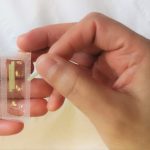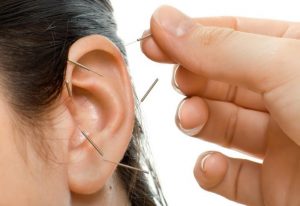We practice a Chinese needling method handed down by Taoist ancestors 1700 years ago. The therapy concentrates on hand acupuncture, ear acupuncture and foot acupuncture. It has refined over the centuries, over the last century by hospitals and is currently the main stream for acupuncture taught by the UK Academy of Chinese Medicine.
Our therapist will first make an assessment, asking and listening to see what ails the patient. This diagnosis can take up to half an hour. The first treatment follows immediately and takes around an hour. All our first sessions of acupuncture take around 90 minutes in total.
During the assessment the therapist will explain each step of the treatment and tell the patient which parts of their body will need needle treatment.
According to traditional Chinese medicine the body has several energy lines called meridians. On these energy lines at specific points acupuncture needles are placed. The specific position is related to the internal working of the body.
These meridian lines follow what in Chinese medicine is called the flow of Chi or Qi. Slow and badly working meridians may have blockages which are removed by the placing and manipulation of very fine needles.
Acupuncture promotes the circulation of the energy flows of Chi and blood.
Acupuncture has been used to help to treat successfully a large range of problems such as:
Neurological and muscular disorders
- Fibromyalgia
- Headaches, facial tics and neck pain
- Rib neuritis
- Frozen shoulder and tennis elbow
- Carpal tunnel and other forms of tendonitis
- Lower back pain and sciatica
- Arthritis and osteoarthritis
Respiratory disorders
- allergies
- sinusitis and sore throat
- bronchitis and asthma and recurrent chest infections
- Indigestion including reflux
- Gastritis and hyper-acidity
- Irritable bowel syndrome or spastic colon leading to constipation and diarrhoea
- Acne, even strong cases with pustules
- Eczema
- FolliculitisUrinary, menstrual, and reproductive problems
- Prostate problems such as enlargements
- Gynaecological problems such as painful menstruation
- Non- gonococcal urethritis in men and women
- Cystitis and common cases of ovarian cysts
Psychosomatic disorders
- Insomnia
- Migraines and tension headache disorders
- Meniere diseases
In our practice we use the needles mostly on the fingers, the ears and the feet.
Once the needles are placed the therapist moves each in a particular pattern to stimulate the start of restoration of the Chi or Qi streams in the body.
It will take several treatments to repair the working of the meridian lines and restore the proper flow of the Chi or Qi of the patient.
After acupuncture you cannot let water touch the skin for up to four hours on the places where needles were placed. Acupuncture manipulates the energies contained in the liquids which circulate in the body. Adding water or other liquids on the skin for the first four hours interferes in the creation of a new body balance.Acupuncture is based on recurrent treatment over several sessions to allow the body to find its natural ability to heal itself.Acupuncture cannot treat scarred skin or damaged limbs.
During menstruation, normal and abnormal temporary variations of the circulation system make it impossible to do any acupuncture treatment.During pregnancy we do not use acupuncture because the mother-to-be has a different life and body growing inside her. Pregnancy involves two integrated persons. The foetus is a separate entity growing into a different person from the mother. It is therefore not advisable to treat during pregnancy unless to reduce anxiety, pain and stress during childbirth. That type of acupuncture is not done by us but by specialist midwives and by doctors of acupuncture in hospitals.
For more general information click here to read a brief introduction to the history and current practice of Chinese healing related to massage and acupuncture.



